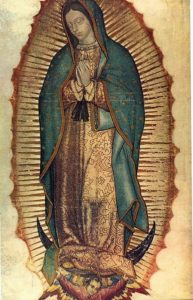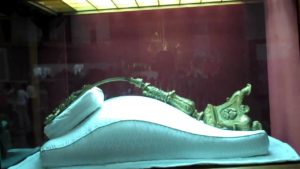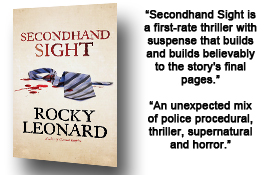 Some of my atheist friends (excluding my friend Kyle, of course) are always demanding proof that God exists, but I’ve come to realize that they don’t really mean it.
Some of my atheist friends (excluding my friend Kyle, of course) are always demanding proof that God exists, but I’ve come to realize that they don’t really mean it.
What most of them want is to insist they have no reason to believe in a supernatural God, but generally because they simply don’t want God to exist, because that would conflict with their existing worldview. Demanding proof that God exists implies that person does not fully understand the concept of faith.
Proof and faith are mutually exclusive.
If you have proof, faith is no longer required. Don’t believe me? Let me prove it to you. (Pun intended)
Anyway, honest scientists don’t talk in terms of proof. Scientists mostly talk about what they can deduce from what the evidence tells them.
Personally, I think that I waste too much of my life arguing with unhappy atheists. I don’t particularly enjoy being constantly needled or ridiculed by very angry people simply for expressing my opinion, especially I don’t really consider myself any sort of evangelist for Christianity. I’m just a writer.
My best writing seems to focus on things that interest me, and because I consider myself a Christian, alleged evidence that supports Christian faith interests me quite a bit.
But I understand that when I seek information about a story, I’m not seeking proof the story is true. I’m merely seeking evidence to support or debunk a claim being made.
For example, I’ve said before that the Shroud of Turin will never and could never be fully authenticated as the burial cloth in which the body of Jesus Christ was wrapped after crucifixion, no matter what any scientific expert might claim.
That claim can never be proved simply because we don’t have the DNA of Jesus on file to compare with the blood evidence reportedly found on the shroud.
However, tests have shown that real blood once saturated the material, that the cloth was once located within a 50-mile radius of Jerusalem, and the carbon dating tests that many atheists have been led to believe “proved” the shroud was a medieval forgery were more recently invalidated.
As a Christian, I don’t need the shroud to be real, but I am comfortable believing it’s real because scientific evidence hasn’t proved it’s fake. The fact that a team of scientists spent two weeks trying to determine how the image could have been faked only managed to rule out all the known ways such an image might have been intentionally created by human hands. They couldn’t prove what created the image on the shroud; they could only say they knew what wasn’t done — the image wasn’t painted.
Though not as famous as the Shroud of Turin, the tilma of Juan Diego is another example of a religious relic that science can’t begin to explain.
When I originally posted the article about the tilma as the Atlanta Creationism Examiner, some of my critics actually complained because I described the material as cotton, which was incorrect, while failing to acknowledge that the actual material, cactus fiber, is even less durable than cotton.
Even so, like the Shroud of Turin, the decision on whether or not to believe that it is what some people believe it is ultimately becomes a matter of faith. If someone doesn’t want to believe the shroud or tilma are real, it only becomes necessary to point out that proof they are authentic is an unachievable goal.
The believer does not require proof, but may still enjoy the benefits of having strong circumstantial evidence support their “leap” of faith, if that helps.
Consider the tilma of Juan Diego — we could never prove this allegedly illiterate peasant actually encountered the Virgin Mary on a hilltop outside of Mexico City, but information exists that lends tremendous credibility to the belief that extraordinary events may have created the image on the tilma, such as:
- In 1929, a terrorist tried to destroy the tilma with 29 sticks of dynamite, which blew out windows 150 meters from the site of the bomb, which had been placed directly underneath the relic. The heavy iron crucifix shown on the right that was next to the tilma was horribly bent and mangled by the bomb blast. The thin fabric, protected only by a sheet of glass, was undamaged.
- In 1785, a worker accidentally spilled nitric acid on the tilma, which should have destroyed both image and material. However, within thirty days, the image had self-restored.
- Most interestingly, scientists have taken readings on the material and discovered it is consistently the exact same temperature as a living human being (98.6 degrees Fahrenheit.)
Personally, I’ve never seen the Shroud of Turin or the tilma of Juan Diego. As a non-Catholic, religious relics and icons aren’t terribly important to me. On the other hand, I have friends who have either seen the Shroud of Turin or the tilma of Juan Diego in person who shared their experiences with me.
My friend who visited Mexico and saw the tilma of Juan Diego gave me his impression of the evidence and in his opinion, the image looked as if it had been dyed into the fabric, and not painted. The fact that I know he’s a professionally trained artist allows me to assign a little more weight to his opinion of an “art” object than I might to an amateur opinion from an unknown or questionable source.
That doesn’t make his “better educated” opinion true, of course, only more likely to be correct. Fortunately (for my artist friend) his beliefs are in complete agreement with analysis and testing conducted by fully qualified professional scientists, considered experts in their respective fields. My friend doesn’t really need to worry about his opinion being distorted by personal confirmation bias; it has been confirmed by experts.
And yet what do all of these words prove? Nothing, of course. All this information does is to give a person open to belief valid reasons to believe.
I don’t need for the Shroud of Turin or the tilma of Juan Diego to be real in order to have my faith. The atheist simply can’t afford for them to be true.
This might explain why the argument about their authenticity always seems far more important to the average atheist than it is to me.

I think you would enjoy a recent and comprehensive book on the shroud by Mark Antonacci.
http://www.testtheshroud.com